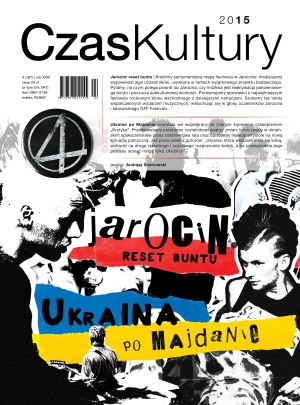
We kindly inform you that, as long as the subject affiliation of our 300.000+ articles is in progress, you might get unsufficient or no results on your third level or second level search. In this case, please broaden your search criteria.


The article discusses the impact of war on Ukrainian culture. Culture became caught up in the war machine; artists were aware that their work, by acquiescing to the needs of the moment, lost its artistic value. The author notes that the number of hot spots in culture has risen due to increased possibilities for articulating new ideas and expressing critical views about the Ukrainian past and present.
More...
A pamphlet on the limited awareness within Ukrainian society, the fullest expression of which is the figure of the “aunt”, who represents the mentality of an ordinary person. The author describes the global transformation of values that began during the Maidan revolution, and shows its instability and shallowness, which led to the loss of Crimea and parts of Donbass. Ukraine is entering onto the path of earnest and honest self-recognition and efforts to better itself; the only thing standing in the way of this process are Ukrainians themselves.
More...

In the article, the author analyzes a specific type of mega-event, the festival. The purpose of the study is to compare two disparate types of opinion on the social, economic and cultural meaning and function of festivals. These opinions are expressed, on one side, by supporters of festivals, who attribute to them many culture-forming elements, and, on the other side, by criticisms based on allegations that most contemporary festivals are characterized by commercialization and schematism. The opinions of researchers, writers, journalists and festival participants cited in the text allow us to ask whether and to what extent the “festivalization” of culture has now become a megatrend.
More...
The article concerns the Festival of Taste, held in the village of Gruczno, and on the basis of this event, highlights interesting tensions that arise from the clash between local activities and global tendencies. The presented case study reveals problems that arise when local communities come into contact with the mechanisms of tourism, and shows the different needs and articulations of the various parties involved. The Festival of Taste in Gruczno is an appealing topic for research in this regard. Its development from a local event to a tourist mega-event, and its current state, which reflects both local and supra-local interests, clearly reveals this interplay. In studying the Festival of Taste, the authors refer mainly to culinary aspects, e.g. products and local producers and their relation to culinary tourism, but their analysis goes far beyond culinary matters, showing how this context merely illustrates the cultural policies that are currently being carried out and how they are privileged.
More...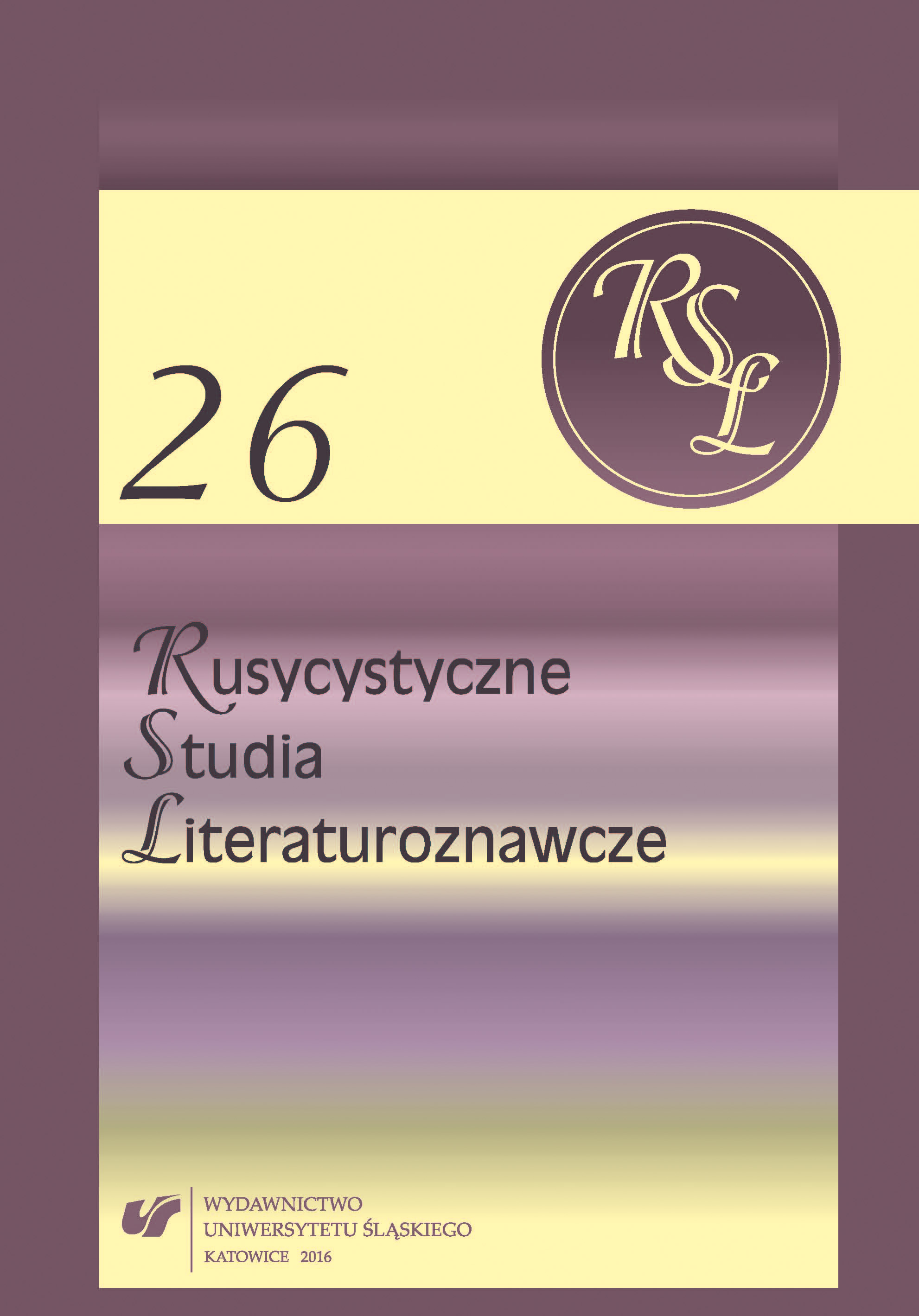
The subject of the analysis is the Russian avant‑garde art of textile and clothesdesign as a manifestation of the artists’ desire for a change of the aesthetics of the surroundingenvironment and as an innovative form of artistic expression. Two models of textile and clothes design are discussed on the basis of works by supremacists (K. Malewicz, N. Sujetin, I. Czasznik), constructivists (W. Tatlin, A. Rodczenko, El Lissitzsky, O. Rozanowa, W. Stiepanowa, L. Popowa, A. Ekster, N. Gonczarowa, S. Delaunay, etc.) and textile artists employed by textile industry (W. Masłow, S. Burylin, M. Anufriewa, W. Łotonina, etc.). Apart from decorative textile art inspired by painting, which is described as abstract, geometrical design, there is also thematic and programme design based on propaganda motifs and visual narration which refers to important events and changes that took place in Russia in the 1920s and 1930s. Both models of textile and clothes design, which interpenetrate and complement each other, are shaped by cultural dialogue based on binary models: canonical — non‑canonical, traditional — modern, rationalist — irrational (autonomy of creative consciousness), work — fashionable, male — female, manufactured — high‑technology,unique — mass‑produced. At the level of theory and artistic practice textile design is determined by such factors as: the concept of blurred boundaries between art and life,beauty and utility, Malewicz’s suprematist philosophy of design, constructivist and industrialtheory, and formal experiments.
More...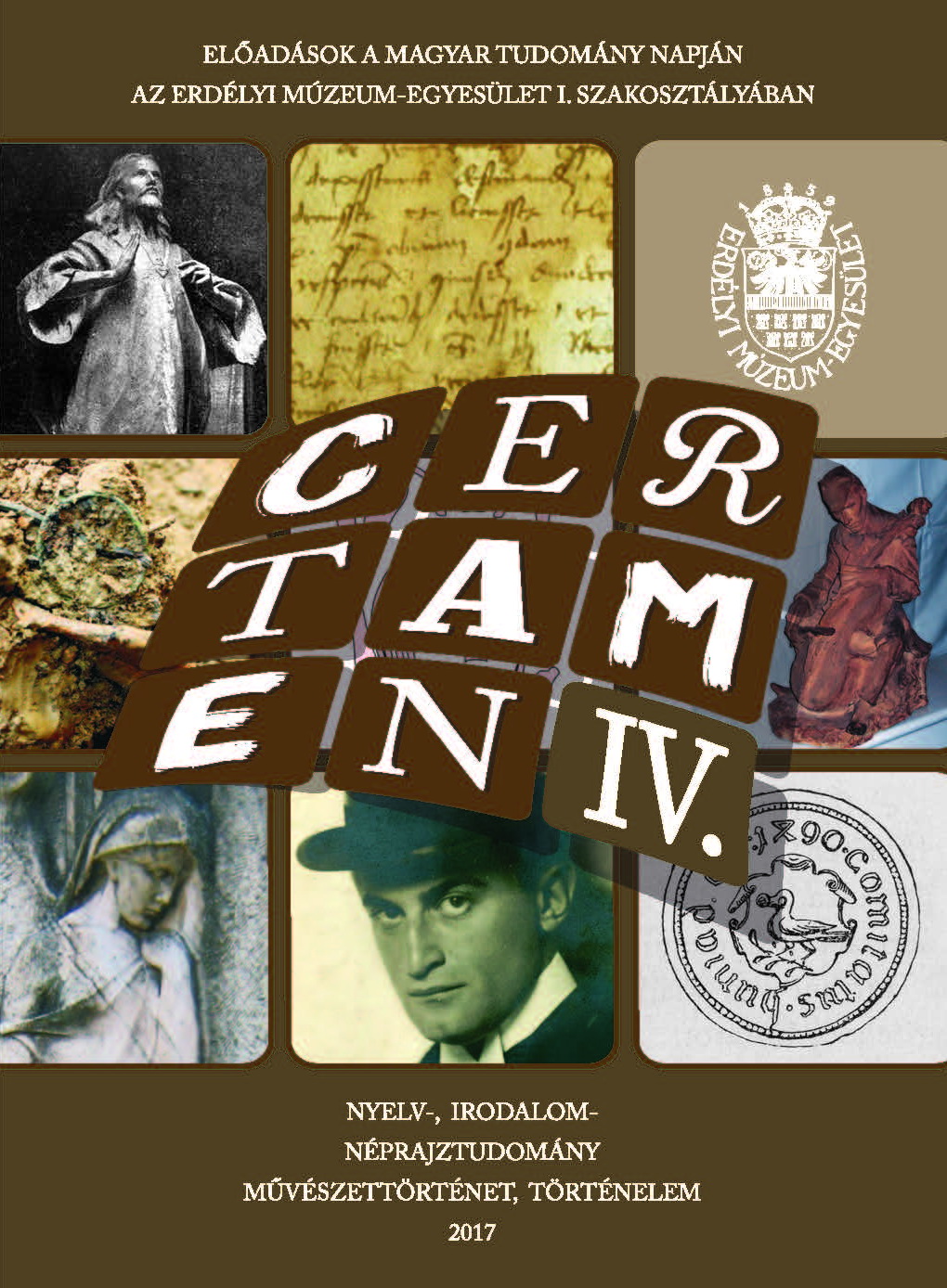
The artist Ferenc Kolozsvári-Szeszák (1881–1919) from Cluj was one of the most instructed Transylvanian sculptors at the beginning of the 20th century. His parents, wealthy craftsmen, didn’t prevent him from building an artistic career, so he could study at the Academy of Applied Arts from Budapest (Iparművészeti Iskola), and after one year of studies in Paris, he became for fi ve years (between 1903 and 1907) the disciple of Alajos Stróbl, a well-known sculptor and pedagogue from Budapest. In his short creative career he worked mostly in Budapest, where he attended many sculptural contests, but he had orders from his native town, Cluj, too. At Budapest he modelled two statues which ornamented the front of the National Theatre of Kolozsvár, the fi gures of Transylvanian Maecenas Miklós Wesselényi and writer Miklós Jósika, creations which “disappeared” in the year of 1919. On the top of the two towers of the theatre one can see the two triumphal chariots pulled by three lions, sculpted by him with the help of three other colleagues from the workshop of Stróbl. In the year of 1906 he made the statue of Hungarian poet János Arany at Szalonta. The statue of Jesus Christ in art nouveau style was erected in the town Kanjiža, in Vojvodina (Serbia). He came back definitively to Cluj when the director of the National Museum of Transylvania, dr. Béla Pósta offered him the position of the restorer of the museum, and warranted a flat and a workshop in the building of the institute. Here he modelled the Guardian of Carpathians, a wooden statue placed in the central square of the town in 1915, which “disappeared”, too, after 1919. He sculpted some beautiful funeral monuments that can be visited in the famous Házsongárd cemetery in Kolozsvár (those of Farkas Gyalui’s wife, Gyula Dietrich’s, composer Ödön Farkas’s etc.) Sculptor Ferenc Kolozsvári-Szeszák died prematurely of t.b. in 1919.
More...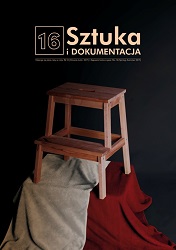
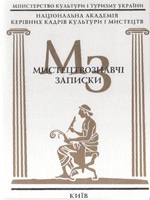
The purpose of the article is to characterize the features and basic principles of the Art Nouveau style in arts and crafts by analyzing figures on objects of decorative and applied art of that time. Methodology. The methodology of the research consists in the application of historical, logical, analytical, descriptive and art methods, which allow to study and to descript the style of decorative art articles of the modern era, to generalize the principles of applying decor to interior items, decorations, fabrics, etc., and to identify the basic finishing materials. Scientific Novelty. The scientific novelty consists in studying the artistic stylistics of decorative and applied art of the modern era, the main types of products, and its further modification in the transition to industrial production, which has also influenced modernity; the generalization of the basic decorative figures on products of arts and crafts; the clarifying the artistic heritage of artists of the Art Nouveau era. Conclusion. It is established that the time of modernism has brought decorative and applied art to the level of the fine due to the application of high standards of craftsmanship and design in everyday objects of interior and facade decoration. The features of the Art Nouveau style are the rejection of corners and straight lines in favor of more natural ones, the use of new technologies (especially in architecture), the development of applied art. This style combined the utilitarian and artistic functions of products, its main principle was embodied in a flexible and streamlined forms of dynamic equilibrium.
More...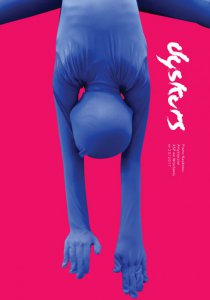
Grzegorz Dziamski High an Low Art Many people believe that the division into high and low art is already a thing of the past, that postmodernity effectively eradicated it. I would like to contradict this view by putting the thesis that the division of art into high and low always existed, and postmodernism changed only the relation to low art. A modern or modernist version of division into high and low art becomes a division into elitist and mass art. In the nineteenth century, well-known opposition of the mass art, subdued to market mechanisms, and the elitist art countering these mechanisms were formed. This opposition finds its extreme expression in the writings of Jose Ortega y Gasset and Clement Greenberg – representatives of the Frankfurt School. Mass art wants to be a popular art, it’s obvious, but the thesis does not always work. Whether or not a mass-produced objects belong to popular art depends not only on the producers, but also, and perhaps mostly – on the consumer. It is high time for aesthetics to become popular, posthumously appealing to Richard Shusterman, who was an American aesthetics theoretician. What aesthetics would bring to reflection on popular art? Shusterman says that aesthetics should validate popular art, but such legitimacy is probably unnecessary, because no one refuses popular art the status of art. It is also not clear why educated elites should contribute to improvement of popular art if this art is not addressed to them and it does not even provide any entertainment to them. It would mean putting popular art under the guardianship of the elite, and that would start a returning to some version of Platonism. On the other hand, one may wonder whether popular art is not constantly being improved by the industry, experts, psychologists, sociologists, marketing specialists and public employees. Of course, they are improving popular art in the context of box office. Post-modernity has not overcome the opposition of low art / high art, it only has redefined and changed our attitude towards it. Hierarchical tolerance and hierarchical pluralism thus replaced hierarchical intolerance. The proponents of high art have ceased to demand the liquidation of low art.
More...
Marek Śnieciński Anti-spectacle and other forms of artistic struggle with spectacularity Śnieciński analyzes mechanisms that govern the society of the spectacle, such as mechanisms of alienation, the unilateral nature of communication, the consumption of time. He also describes the diagnosis of contemporary culture of spectacle: museum-like reality, the tourist-like attitudes towards the reality (Giorgio Agamben), including its ‘facial’ variant, in which ‘politicization and face market’ took place (Hans Belting). In such a theoretical context, reflections are devoted to selected artistic strategies through which artists try to liberate themselves from the captivating codes of spectacle and spectacularity. Art by Jochen Gerz, Peter Eisenman, Eugeniusz Get Stankiewicz, Christian Boltanski, Martin Paar and Sissel Tolaas were discussed and analyzed.
More...
Agata SzubaArt as spectacle: thoughts on medial messageThe progressing process of reality virtualization does have impact on social transformation of the globalized tele-IT society, as well as on artistic practice which, therefore, has significant impact on transformations and the new way of describing culture. According to modern media theories, which are difficult not to agree with, the culture of the twenty-first century should be defined in the perspective of universality of such phenomena as globalization, cultural pluralism and nomadism, originating in permanently and irrevocably crossed borders of the communication model:from reproduction to simulation of reality, thus resulting in a structure of a surveillance society, a society of performance and virtual union. The latter aspect, namely emerging of an audio-visual culture that, determined by social interactions, is revealed mainly in a form of a performance, isa fundamental benchmark, and that results from the fact of anachronism of the metaphor of culture as a text which became an equivalent of “ideological text”. Visual culture in a tele-IT world became a culture shaped by visual media what, in consequence, reversed the permanent point of reference in the relation subject-object (thing, phenomenon, human, relations and interpersonal interaction), as experience more and more often embraces images of the world (television and the Internet), not the reality itself. It is obvious that those images of the world, as a subject of intellectual–emotional consumption, more and more often, less to say that commonly, as an assumption, are not subject to judgements based and positively characterized by the truth-false criterion. Their visual and persuasive strength, being a derivative of spectacularity and aesthetics of the presented event, depends on attractiveness of so called „produced text” which, substituting reality, becomes a new social environment –virtual reality.
More...
Jowita Mormul What a beautiful catastropheTragic human death is nowadays commonplace in the news media, on the Internet, advertising and in the arts. Art-pieces on post-mortal, sepulchral and sacral subjects and war include the elements of death in creative discourse. Massively reproduced photography and film reproduce images related to death and violence, which are perceived both in the context of information and art. Art-pieces in galleries and different collections contribute to the fact that death begins to fall under market law and functions as commodities. Based on selected phenomena in art, history and media communication, Mormul analyzes the mechanisms that cause the popularity of death related themes and the associated sensation to be the inspiration for artists.
More...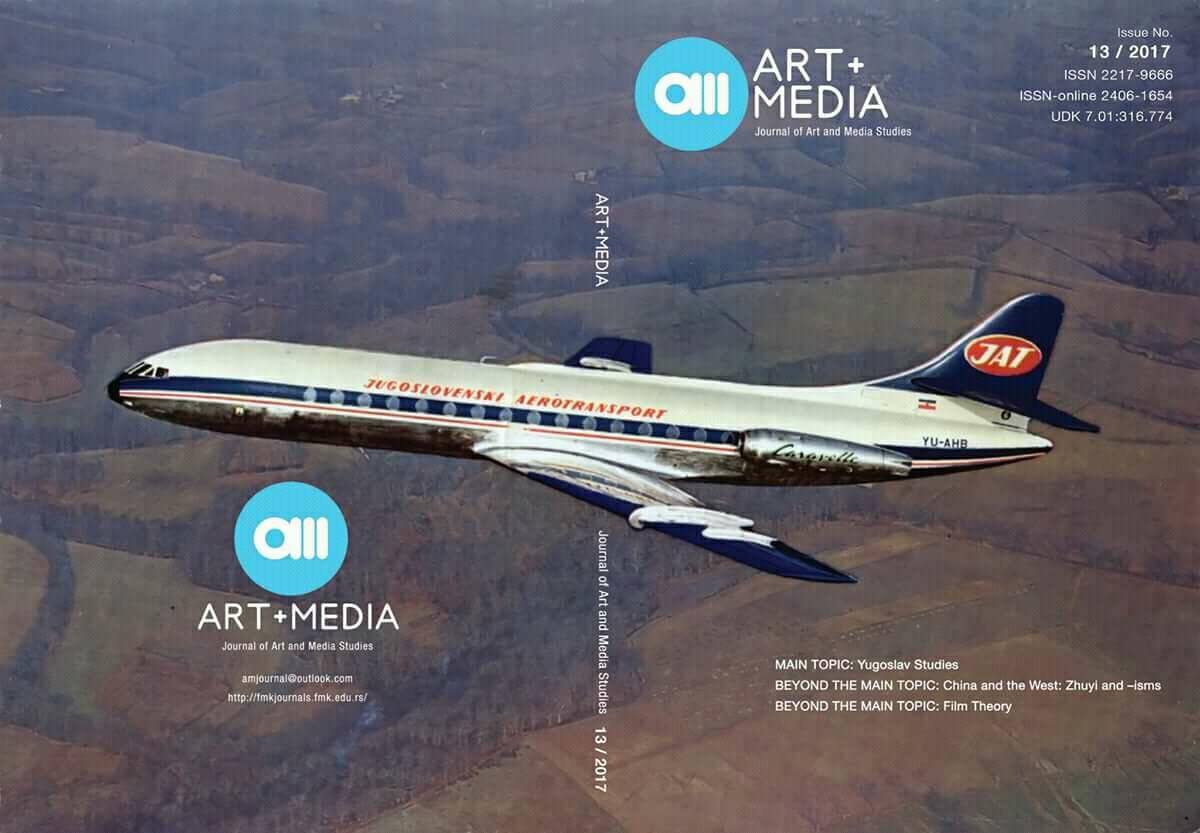
This paper examines Cyber Yugoslavia, a state created on the internet, afterthe fall of the Socialist Federal Republic of Yugoslavia (SFRY). Located in cyberspace, CyberYugoslavia belongs to the corpus of virtual countries appearing as a subversive response to thenationalism and wars that led to the disintegration of the SFRY. The ludic and parodic characterof CY makes it a unique example of the way in which it challenges and questions deepstructures and ideological mechanisms of nation and nation-state construction. Using parodyand laughter, CY deconstructs the concepts that are essential parts in creating the ideology ofnation. The very same concepts are the focus of the theoretical approach to nation, whereforethe paper focuses on the intersection of theoretical and IT creative work.
More...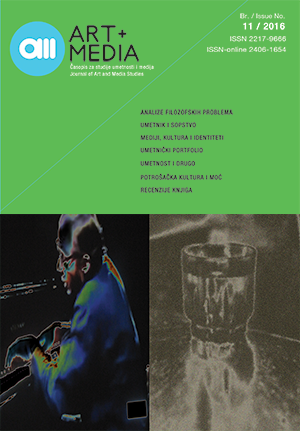
This research includes well known women writers, visual artists, humanitarians, professors who declared themselves as a Bunjevke. It is about Mari Đorđević Malagurski, Kati Prčić, Ani Beslic, Angeli Mačković, Jeleni Covic, Gabrieli Diklić, Suzani Kujundzic Ostojic, Alisi Prčić, Ani Vukov and Veri Korponajić. The goal of this research is to show how the history changed position of a Bunjevci and Bunjevke, as well as their identity and ethnicity.
More...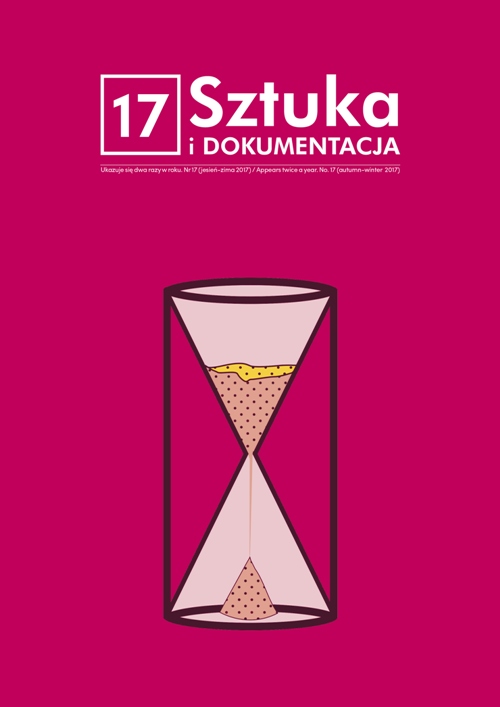
DOCUMENTATION, OR HOW TO SEE THE INVISIBLE. METHODOLOGICAL BASIS FOR ANALYSIS AND INTERPRETATION OF EPHEMERAL WORKS OF ART Working with documentation in the case of ephemeral works in a necessity. If the ephemerality is the basic assumption of the art project, the documentation is the only artefact that remains. Such an attitude means that the documentation becomes the sole artwork in its own right and can be researched just like any other works of art. This is the situation in the case of action art, processual and conceptual works. The unique and particular status of such artworks means that they require a particular research methodology. The construction of such a methodology is still in the phase of recognition of its feasibility. This text points to its possible condition on the meta- methodological level, and to a lesser extent at the level of practice. The specificity of the documentation of ephemeral works means that when we study its documentation we are by nature “confronting images” of what was before this image. In my article, I refer to methodological reflection of George Didi-Huberman from his publication Confronting Images. The main subjects of my text are questions concerning the relationship between the word (description, interpretation) and the picture, and what Didi-Huberman called ‘aporias’, or disturbances which the picture introduces to knowledge (we see what we want to see, not what is presented), and this is illustrated by relevant examples. In the attitude of the researcher towards the image, an openness of looking at the image is crucial. This means building a re-actualising narrative emerging from the description of the representation. The source of new narratives in the history of art are image analysis, in which we pay attention to detail and the ‘pan’ and the interpretation results from their dialectical relationship, which allows the limits of the description on the objective level of the document-image to be exceeded towards the dynamic and therefore performative approach to the meaning of the work. The manner of understanding the word ‘pan’ is of key importance here. I analyze it based on the example of Ryszard Waśko's experimental film. And the manner of picture reception of a ‘pan’ type is characterized by the notions taken from the theory of information adapted to art by Mieczysław Porębski. In conclusion, in addition to the methodological framework of working with documentation of ephemeral works, I also point out the urgent need to undertake such research, because works of this type constitute a ‘blind spot’ or ‘black matter’ in the field of art history, and this by now concerns a huge and growing number of works and projects.
More...
The artist interview as a platform for negotiating an artwork’s possible futures The artist interview for conservation purposes is acknowledged, discussed and widely used within the field of contemporary art conservation, both as a tool for documentation and as a basis for conservation decision-making. There are numerous publications on the subject, including guidelines for best practices and descriptions of its practical applications. This article takes a very different approach to the artist interview. Firstly, by framing it as one of several museum practices related to documentation of the collection, and secondly by analysing its application as a tool for negotiating an artwork’s possible futures. Drawing on one particular case-study, this paper examines an instance of preparing and conducting an artist interview regarding an artwork from the collection of the Stedelijk Museum in Amsterdam. The work in question is a spatial installation by Barbara Kruger, which due to its ephemeral character poses challenges to traditional collection-related practices. The article will follow step by step various phases of the artist interview, from reconstructing the artwork’s history, through investigating its nature, to the encounter with the artist. It will conclude with a critical evaluation of the process, and will propose a framework for including the artist when constructing the basis for future decision-makers.
More...
THE UNBEARABLE VARIABILITY OF MATTER: PLASTICS IN ART The preservation of modern and contemporary works of art has become a real challenge for our age. Conservators have to respond to the needs of the culture and sustainable development today, when we must inevitably extend care and protection to contemporary heritage in the face of globalisation and the transformation of civilization. This requires the synergy of intellectual and scientific potential and implementation of innovative research and modern technological solutions. The multiplicity of forms, ideas, tangible and intangible aspects of contemporary artworks force us to take a different approach in taking care of such work of art. This includes detailed research to recognize the material, technique, concept, context; preventive, active conservation, and conservation through the documentation (including interviews with artists and their associates). This is particularly important for objects created with modern materials, in particular plastics. Plastics are prevalent today, affecting the standard of living and aesthetics in the culture and art of the 19th to 21st century. They have been, they are and they obviously will continue to be used by artists of different disciplines to create various forms of visual art, as the main means of expression, and the material. From the 1930s, synthetics in various forms can be found in the collections and the public space. Plastics have been a part of our cultural heritage and of social life for over a hundred years. They are, however, customarily still treated as ‘young’, and therefore more durable than traditional material. In fact, the opposite is true. The project dedicated to complex care of the plastic legacy in Poland, financed from the resources of the National Centre for Science, started in 2011 and the aim of it was to build a body of knowledge on plastics in works of art in Poland on the basis of interdisciplinary research for identification and establishing the methodology of maintenance, preservation and exhibition. The implementation through analytical tests was carried out in the form of case studies of the works of leading Polish artists using plastics in various periods. Analytical and instrumental tests allow the kind of material and its chemical composition to be determined, and therefore recognition of the techniques and technology, the stage of ageing and the cause of the damage. These determine the choice of the materials and conservation methods. At the same time, humanistic knowledge was augmented by a holistic approach, assessment and adapting to the needs: the history of plastic objects in Polish contemporary culture, their context, and the intentions of artists. The article presents the result of the project and a short outline of the history of the use of plastics in art, including Polish art, presenting examples of specific works (Tadeusz Kantor, Jan Tarasin, Alina Szapocznikow) and problems related to their preservation, conservation and exhibition.
More...
CAN ART BE SUBJECT TO THE SAME MARKET RULES AS A SMARTPHONE? CONTEXTUALISM IN THE PRESERVATION AND RESTORATION OF NEW MEDIA The medium is a reflection of the historicity and the context of a work of art. It represents the time and the place of its creation. As long as the medium is updated, there will be access to an audiovisual object. However, if its key technical components are not preserved in the original form, the most popular concept concerning the authenticity related to the object’s physicality can be challenged. Conservation and restoration of audiovisual objects is not an abstract issue, but a real challenge for the majority of museums, art galleries and film archives. In order to screen movies, play videos, reinstall sound installations, and show slides or other forms of time-based media, they should be adapted to the rapidly changing exhibiting conditions, dependent on the current technology. Time-based media are at risk of being lost with time. They are created and presented thanks to mass produced technical devices, which are susceptible to obsolescence and even irrevocable loss. The general duty of conservators of time-based media is providing constant access to the content, but at the same time, the integrity of the whole object must be preserved. Changing the carrier or the manner of presenting an audiovisual object has considerable impact on the perceptions of this kind of work of art, which are constantly reinterpreted anew. The majority of the conservation and restoration activities connected with time-based media are not like any traditional conservation treatments. It is true that they are mostly about the analysis of the technology used, but the main task of conservators is an attempt to project the future - difficulties in preserving devices and carriers and developing an overall strategy for their migration. The manner in which we treat the physical aspects of time-based media will have a huge impact on the perception of present and future viewers.
More...